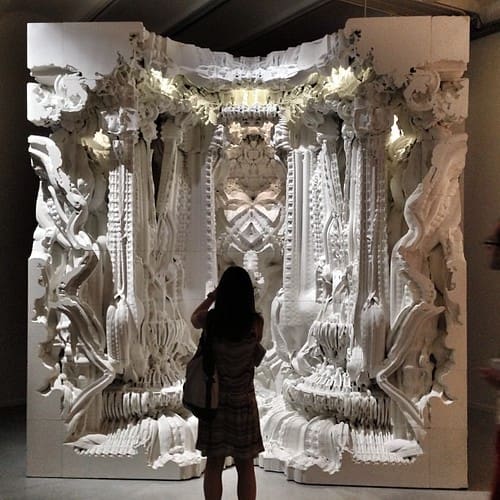Architectural engineering, a discipline that integrates aspects of architectural design with engineering principles, is witnessing a transformative shift with the integration of 3D printing technologies. This shift not only revolutionizes the way structures are conceived and constructed but also offers unprecedented opportunities in customization, waste reduction, and efficiency. 3D printing in architectural engineering paves the way for building more complex, sustainable, and cost-effective structures by allowing direct fabrication from digital models to physical objects.
The Emergence of 3D Printing in Architectural Engineering
3D printing, also known as additive manufacturing, initially used primarily for small-scale models and prototyping, has scaled up to encompass large-scale construction processes. This technology’s capability to print entire building structures or complex components on-site or off-site transforms traditional construction methodologies, offering a more dynamic approach to architectural design and building.

Advantages of 3D Printing in Architectural Engineering
Innovative Design Flexibility: 3D printing enables the creation of complex geometries that are often challenging or impossible to achieve with traditional construction methods. Architects and engineers can explore novel architectural forms and structures, pushing the boundaries of design aesthetics and functionality.
Efficiency and Speed: Compared to conventional construction techniques, 3D printing can significantly accelerate the building process, as entire walls or other structural components can be printed in a matter of hours or days, depending on the project scale.
Sustainability: 3D printing minimizes waste by using only the necessary amount of material required for each component, contributing to more sustainable construction practices. Additionally, it opens possibilities for using recycled materials or local earth-based composites, reducing the environmental impact of new constructions.
Cost Reduction: By decreasing labor costs and material wastage, 3D printing can make construction more affordable. This cost-efficiency makes it particularly appealing for projects in remote or underserved areas where traditional construction logistics are prohibitively expensive.
Customization and Personalization: 3D printing allows for the customization of building components to fit specific site conditions or client preferences without significantly altering production costs or timelines.
Key Applications of 3D Printing in Architectural Engineering
Residential and Commercial Buildings: From single-family homes to office buildings, 3D printing is used to construct both foundational elements and aesthetic details, allowing for rapid on-site assembly of pre-printed components.
Restoration and Preservation: 3D printing provides valuable tools for restoring or replicating architectural elements in historical buildings, where traditional techniques might be too invasive or costly.
Infrastructure Projects: Large-scale 3D printers can create robust components for infrastructure, including bridges, culverts, and retaining walls, tailored to specific environmental and load requirements.
Interior Design: Custom furniture, wall elements, and décor items can be 3D printed to match the precise design vision, providing bespoke solutions that integrate seamlessly with the building architecture.

Challenges in 3D Printing for Architectural Engineering
Material Limitations: The range of materials suitable for 3D printing is currently limited, primarily to certain plastics and concrete mixes. Expanding the material palette to include more durable and versatile options is necessary for broader applications.
Structural Integrity: Ensuring that 3D-printed buildings meet all structural safety standards is crucial. Continuous testing and certification of printed materials and structures are required to build trust and verify their long-term durability.
Scale and Logistics: While printing small components is well-established, scaling up to larger structures poses significant logistical challenges. Managing the transportation and on-site assembly of large printed elements needs careful planning and coordination.
Regulatory Approval: Building codes and regulations have not yet fully caught up with the possibilities offered by 3D printing. Navigating these regulatory environments can be complex and varies significantly by region.
Future Directions in 3D Printing for Architectural Engineering
As 3D printing technology continues to evolve, its impact on architectural engineering is expected to grow. Future advancements likely include the development of new materials with enhanced properties, more sophisticated printing technologies capable of integrating multiple materials in a single print cycle, and greater automation in the construction process.
3D printing is setting new standards in architectural engineering, offering innovative solutions that challenge traditional construction paradigms. As the technology advances, it promises to further revolutionize the design and construction of buildings, enhancing efficiency, sustainability, and creativity in architectural projects. With ongoing innovations, 3D printing will increasingly become a cornerstone technology in architectural engineering, pushing the boundaries of what is possible in the built environment.








